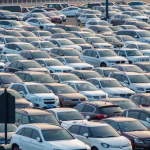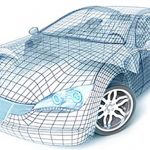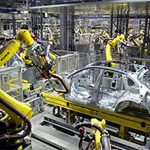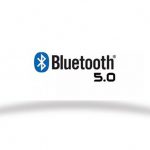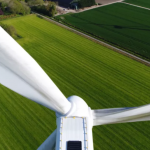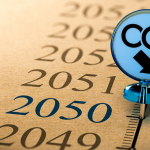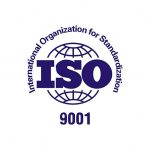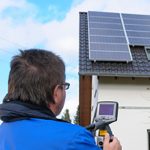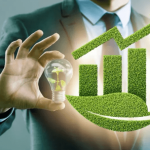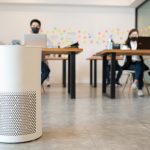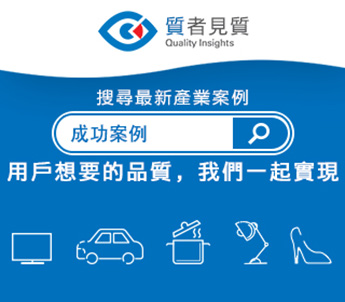數字化檢驗成就建築 2.0 | Digital Inspection Transforming Construction 2.0
- TR.mobile: Terminal-independent software for checklists and work instructions adapted to the needs of the plant.
Smart Gear: Inspections are carried out either with remote support from on-site personnel or with the help of overlaid information via the instruction monitor - UAS (Unmanned Aircraft Systems): Inside and outside drones, as well as in narrow spaces, 3D images, thermography / infrared, sonar / ultrasound. Laser pulse-scanning method for precise measurement, electro thermography
- CMS (Condition Monitoring): Mobile data collection on the object by sensors for vibration, movement, acoustics etc.
- Beacons With configurable software and wireless connection for information gathering on site

香港建築領域的經濟地位與日俱增。 2016年,建築業佔本地生產總值(GDP)為5.2%,相較於2006年提升了73%。儘管本地的建築業繁榮發展,但2018年公佈的一項國際調查顯示,香港仍是全球房地產開發成本第三高的地區,僅次於紐約和舊金山。該調查指出,香港的平均建築成本位居亞洲各地區之首。隨著人力短缺以及建築工人老齡化等現象的日益嚴峻,建築業成本可能會持續攀升,從而導致市場環境進一步惡化。
建築 2.0 的轉型升級是不可避免的嗎?
在過去的十年裡,數字化進程已經在世界各個領域掀起了巨大的浪潮,人類已經迎來了一個全新的技術時代,即,工業 4.0。然而,在這個日新月異的時代裡,唯獨建築業仍舊維持著過去50年一成不變的運行模式。至今,該行業仍是依賴建築工人的體力勞動、機械技術以及早期建立的運營和商業模式。因而,建築生產率無法提升,行業發展停滯不前。

智能電梯及預測性維護業務模式
時至今日,自動扶梯以及升降電梯已經進入了一個全天候無間斷互聯服務的新時代。其核心理念是將最新的基於物聯網的監測技術(振動傳感、傳聲器、智能插座、窄帶物聯網以及雲儲存)與先進的數據分析能力相融合。此類自動扶梯和升降電梯的客戶(包括樓層業主和設施經理)可以通過監控一個在線儀表板來了解他們的設施情況,當設施出現問題時,他們就會收到警報——“由此,人們就可以進行主動的、甚至是預測性的維護管理”。

自動化機場以及航行線路的無人機測試風險評估
目前,建築業似乎大量使用無人機來記錄項目進展,從而協助軟件程序進行圖表繪圖(包括建築信息模型)、勘測和監控。這些進程可包括獲取熱成像記錄,以便在確定需要整改的建築缺陷時,向工程師和檢驗、測量人員提供必要的信息。

智能建築和環境的輔助生活概念
環境輔助生活(AAL)為人們提供了一個由智能設備、醫用傳感器、無線網絡、計算機以及應用軟件組成的智能建築監測系統。智能家居以及智能建築理念可以增加每位客戶的平均收益,同時,更為重要的是,該理念還能提供便捷和安全。另一項新興技術是指環境下智能家居控制系統(AmI)。該控制系統是指通過一個特定的計算系統,感知周圍環境,並對人的存在做出反應的能力。
將智能服務應用到每一個領域
TR.mobile :根據工廠的檢查表和工作指示,量身定制的獨立的終端軟件,以滿足其特定需求。
智能裝置:可以在遠程員人員支持下進行檢查,也可以通過監視器的幫助下進行
無人機系統(UAS):附在無人機內部和外部的儀器包括: 傳感器,3D圖像,熱成像/紅外線探測,聲納/超聲波。用於精密測量以及電熱成像的激光脈衝掃描法
狀態監測(CMS):通過傳感器對物體進行的振動頻率、運動狀態、聲音信息等移動數據採集。
配有可配置軟件和無線連接的信標,用於現場收集信息

香港德國萊茵TÜV 執行董事Martin Fan
Digital Inspection Transforming Construction 2.0
The economic significance of the construction sector in Hong Kong has been growing in recent years. In 2016, the sector contributed 5.2% of Gross Domestic Product (“GDP”), 73% higher than that of 2006. Despite the boom, an international survey released in 2018 listed Hong Kong as the third most expensive place to build, after New York and San Francisco. The survey indicates that the average construction costs in Hong Kong was the highest in Asia. The manpower shortage and ageing construction worker may also be further worsened the situation.
Is Construction 2.0 inevitable for businesses?
Over the past decade, digital progress has transformed whole industries, ushering in a new technological era now known as the Industry 4.0. However, over the same period, the construction industry has continued to operate as it has for the past 50 years. It still relies heavily on manual labour, mechanical technology and established operating and business models. As a result, productivity has stagnated.
Smart Elevator and Predictive Maintenance Business Model
Lift and elevator have entered a new era of 24/7 Connected Services. At its core is a fusion of the latest IoT-based monitoring technology (vibration, microphone, smart socket, Narrow IoT, Cloud) with the power of advanced data analytics. Lift and elevator’s customers, comprising building owners and facilities managers, have access to an online dashboard to track their equipment, and they receive alerts when equipment has an issue – “so they can perform proactive, even predictive maintenance”.
Drones Testing Automated Airport and Flight Risk Assessment
Currently, the construction industry appears to predominately use drones to record a project’s progress, mapping for software programmes (including for BIM), surveying and monitoring. These processes could include the taking of thermal imaging recordings to give engineers and surveyors essential information when establishing building defects that require rectification.
Smart Building & Ambient Assisted Living Concept
Ambient Assisted Living (AAL) provides a system comprising of smart devices, medical sensors, wireless networks, computer and software applications for smart building monitoring. Smart home/building concepts could increase the ARPU of customers while on top offering a high level of convenience and security. Another emerging technology in this regard is the Ambient Intelligence (AmI). It is defined as the ability of a computing system to sense its environment and respond to the presence of people.
Use Smart Services in Every Area
編輯推薦
熱門分享


















